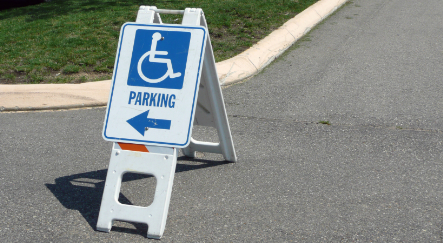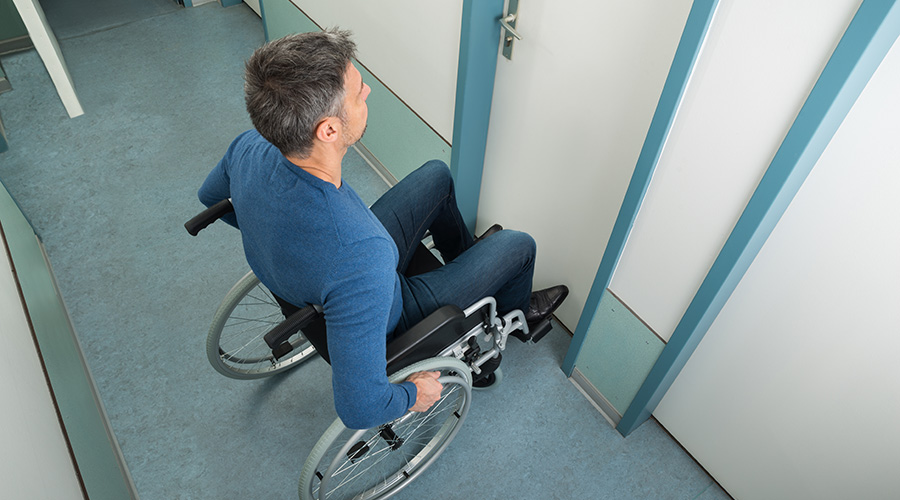Outlook
New ADA guidelines clearer, easier to use, but not yet the law
The Federal Access Board recently updated accessibility guidelines for new or altered facilities covered by the Americans with Disabilities Act and the Architectural Barriers Act (ABA).
The “new ADAAG” — an update of the original 1991 ADA Accessibility Guidelines (ADAAG) — was developed by an advisory committee made up of representatives from the design and construction industry, building code community and people with disabilities. The goals of the revised guidelines were to:
• Update specifications.
• Make ADAAG easier to use.
• Harmonize the guidelines with model building codes and industry standards.
• Make requirements for facilities covered under ADA and the ABA more consistent.
The new ADAAG includes separate scoping sections for facilities covered under ADA and ABA, but references a single set of simplified technical requirements. For example, the new ADAAG establishes one set of accessible reach ranges and maneuvering clearances to which all other sections refer. As a result, sinks, counters and cafeteria tray slides may all be specified at the same accessible height and provide the same amount of knee clearance.
Scoping provisions for privately owned facilities that are open to the public are different from those owned by federal, state or local governments, but technical requirements for accessible elements are the same. For example, privately owned facilities that are less than three stories or less than 3,000 square feet per floor do not require an elevator, under most circumstances. All multi-story facilities owned by government entities must provide an elevator.
When should they be used?
The new ADAAG is not yet enforceable. Now is the time to review it without necessarily using it. Before becoming enforceable, the guidelines must first be adopted by the departments of Justice and Transportation. The agencies have separate reviews — processes that are likely to take at least a year.
The new ADAAG provides a great deal of clarification about what it means to design and build facilities that are “readily accessible to and usable by people with disabilities” as required in the statutory language of ADA. For instance, the new technical requirements for accessible showers specify a maximum water temperature of 120 degrees, adjustable and fixed spray units, and curbs or thresholds of no more than 1⁄2 inch in new construction, and no more than 2 inches in existing facilities where providing 1⁄2-inch threshold would “disturb the structural reinforcement of the floor slab.”
Under no circumstances should the new ADAAG be used before it is enforceable when it provides less access than the current ADAAG. For example, the new ADAAG allows a toilet to be mounted so that its centerline is 16 to 18 inches from the closest wall while the current ADAAG requires it to be mounted 18 inches from the wall. The new ADAAG allows more flexibility to allow for construction tolerances. However, this flexibility is not allowable until the new ADAAG is adopted by the Department of Justice for most facilities, and the Department of Transportation for transit facilities.
Where should they be used?
The design of most facilities, with the exception of some religious facilities, airports and certain residential facilities, is covered by either ADA or ABA. This includes most commercial facilities, public accommodations and government facilities. Religious facilities are exempt from ADA. The portions of airport facilities controlled by an airline are covered under the Air Carriers Access Act; its regulations now allow use of ADAAG as its design standard. New construction of multi-family residential facilities is covered under the Federal Fair Housing Act.
Once adopted, the new ADAAG will become the only enforceable standard, with state and local governments no longer able to chose between the ADA and the Uniform Federal Accessibility Standards (UFAS). All buildings built for the federal government or with federal funding will be covered by these new design guidelines.
Once adopted, these guidelines will be the enforceable design standards for compliance with both ADA and ABA. Both are civil rights laws that define failure to design and construct facilities to be “ readily accessible to and usable by people with disabilities” as a civil rights violation.
Although the architect’s responsibility for compliance with the ADA is a question of current litigation, few architects or facility owners want to be branded with civil rights violations. Making facilities accessible to people with and without disabilities is typically determined to be one part of an architect’s responsibilities in the larger picture of design, client satisfaction and social responsibility.
How are they different from the current ADAAG?
The new guidelines are easier to use than current guidelines. They have been harmonized with the International Building Code’s scoping provisions for accessibility and with the American National Standards Institute’s technical provisions for accessibility (ANSI A117.1) referenced in the International Building Code. They are divided into three sections:
1. Scoping for ADA facilities
2. Scoping for ABA facilities
3. The same technical criteria referenced in both scoping documents (1 and 2).
Within the third part, the first section is called “Building Blocks.” Here the technical provisions for accessible routes, reach ranges, and maneuvering clearances are detailed. These are referenced throughout the other technical chapters. As a result, knee clearances and mounting heights of wall-mounted objects are consistent throughout all sections of the new ADAAG. This consistency will make compliance easier and more effective.
Editor's note: Visit this website to attend a webcast outlining the latest changes to ADA regulations, which the Department of Justice announced July 26, 2010. The presenter is Joan Stein, President and CEO of Accessibility Development Associates Inc.
Katherine McGuinness is the founding principal of Kessler McGuinness & Associates, a national firm specializing in accessibility planning and universal design.
To obtain ADAAG
The new ADAAG and a useful summary of the changes are available at the federal Access Board's Web site or from the Access Board's automated publications order line, 202-272-0080 or 202-272-0082 (TTY). Request publication S-50.
The Department of Justice's Advanced Notice of Proposed Rulemaking is available on its Web site.
|
Related Topics:












